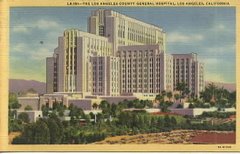Outcomes after switching from one anti-tumor necrosis factor agent to a second anti-tumor necrosis factor agent in patients with rheumatoid arthritis
Kimme L. Hyrich, Mark Lunt, Kath D. Watson, Deborah P. M. Symmons, Alan J. Silman *, British Society for Rheumatology Biologics Register
University of Manchester, Manchester, UK
Abstract
Objective
Patients with rheumatoid arthritis (RA) who experience treatment failure with one anti-tumor necrosis factor (anti-TNF) agent, due to either inefficacy or toxicity, are frequently switched to a second anti-TNF agent, although the benefits of switching are unknown. The present study was undertaken to compare drug continuation rates between the first course and second course of anti-TNF therapy.
Methods
The study involved a prospective cohort of RA patients from a UK national register of new anti-TNF treatment starts (n = 6,739; 876 starting adalimumab, 2,826 starting etanercept, and starting 3,037 infliximab). Over a mean 15 months of followup, 841 patients stopped taking the first drug due to inefficacy and 1,023 stopped the first drug due to toxicity, of whom 503 and 353, respectively, were switched to a second anti-TNF agent. Kaplan-Meier survival curves were plotted to determine continuation rates for each course, and Cox regression was used to compare each course for the risk of stopping and the reason for stopping (inefficacy or toxicity).
Results
Overall, 73% of patients who switched to a second anti-TNF agent remained on the new therapy by the end of followup. First drug discontinuation due to inefficacy was associated with an increased rate of second drug discontinuation due to inefficacy (hazard ratio [HR] 2.7, 95% confidence interval [95% CI] 2.1-3.4) but not toxicity (HR 1.1, 95% CI 0.9-1.5). Similarly, first drug discontinuation due to toxicity was associated with an increased rate of second drug discontinuation due to toxicity (HR 2.3, 95% CI 1.9-2.9) but not inefficacy (HR 1.2, 95% CI 0.8-1.6).
Conclusion
RA patients who are switched to a second anti-TNF drug have high rates of continuation, although among those who must discontinue treatment, the reasons for stopping a second drug are related to the reasons for stopping the first drug. This large data set from the UK provides the first estimates of the magnitude of these effects in patients with long-standing severe RA.
Los Angeles County Hospital

Monthly Paper Selection
Journal RSS (FEEDS):
By following the link below, you will be redirected to my Bloglines website. I set up a page with FEEDS from the main Rheumatology Journals, Internal Medicine Journals and Immunology Basic Science Journals:
http://www.bloglines.com/public/brunostoliver
In addition, I made available some FEEDS from Rheumatology Journals below, but be aware that this is not a complete list of each Journal issue. To get the complete list, click in the link above and you will be redirected to bloglines.com
Medscape Rheumatology Headlines
Physician's First Watch: Current Issue
Arthritis & Rheumatism
Annals of the Rheumatic Diseases current issue
Rheumatology - current issue
Current Opinion in Rheumatology - Current Table Of Contents
CER - Recent Issue
Arthritis Research & Therapy - Latest articles
JCR: Journal of Clinical Rheumatology - Current Table Of Contents
Nature Clinical Practice Rheumatology
Lupus current issue
Journal Links (Blogroll from Bloglines)
Rheumatology Journals Schedule
- Arthritis and Rheumatism: Monthly
- Annals of Rheumatic Disease (The EULAR Journal): Monthly
- Journal of Rheumatology: bi-weekly (only e-mail TOC/no RSS)
- Rheumatology (Oxford): Monthly
- Current Opinion in Rheumatology (COR): 6 issues/year (bi-monthly)
- Clinical and Experimental Rheumatology (CER): 6 issues/year (bi-monthly)
- Arthritis Research and Therapy: 6 issues/year (bi-monthly)
- Journal of Clinical Rheumatology: 6 issues/year (bi-monthly)
- Scandinavian Journal of Rheumatology: 6 issues/year (bi-monthly) !No issues since July 2006
- Rheumatic Disease Clinics of North America: (4-5 reviews/year): Receive e-mail TOC. No RSS.
- Seminars in Arthritis and Rheumatism: 6 issues/year (bi-monthly)+ 2 Supplements: Receive e-mail TOC. No RSS.
- Nature Clinical Practice Rheumatology: Monthly
- Lupus Journal: Monthly
Internal Medicine Journals Schedule
- Archives of Internal Medicine: Bi-weelky (Monday)
- Annals of Internal Medicine: No RSS available: Bi-weekly (Tuesday) (only e-mail TOC)
- JAMA: Weekly (Wednesday)
- NEJM: Weekly (Thursday)
- Lancet: Weekly (Friday)
- British Medical Journal: Weekly (Saturday)
Saturday, January 27, 2007
Subscribe to:
Post Comments (Atom)





No comments:
Post a Comment